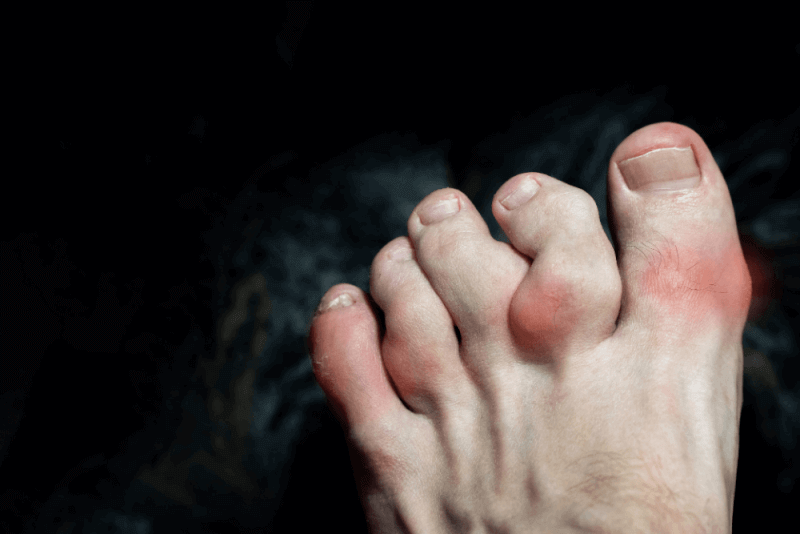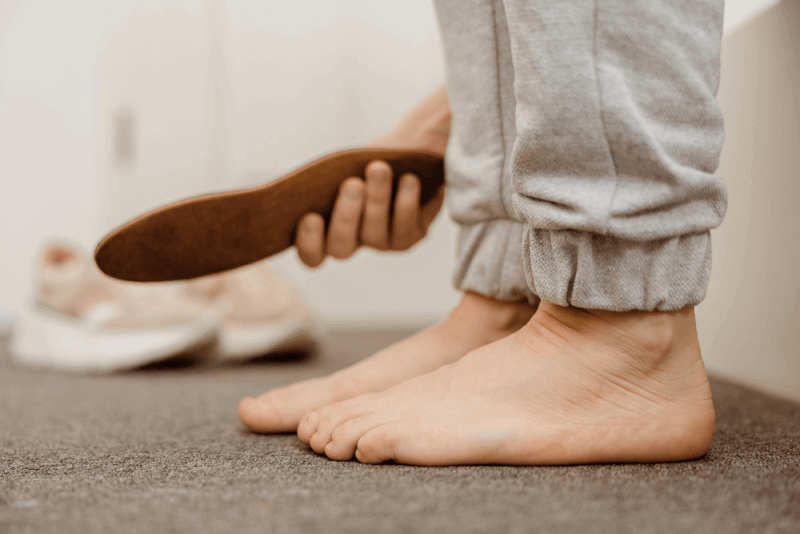30-Second Summary
- Painful swelling near the hip joint is called trochanteric bursitis. It occurs due to inflammation of a small fluid-filled sac known as a bursa.
- Anything that causes irritation or damage to the bursa near the greater trochanter can lead to trochanteric bursitis.
- The hallmark symptom of trochanteric bursitis is hip pain.
- Trochanteric bursitis is usually diagnosed through physical examination.
What Is Trochanteric Bursitis?
Painful swelling near the hip joint is called trochanteric bursitis. It occurs when a small fluid-filled sac called a bursa becomes inflamed. Bursae are cushions located in spaces around bones, tendons, and joints. They function like bubble wrap to protect these structures in the body.
The hip joint is the point where the thigh bone connects to the pelvis. The sharp outer edge at the top of the femur is called the trochanter. Trochanteric bursitis occurs when the bursa covering the greater trochanter is damaged, inflamed, or irritated.
Causes of Trochanteric Bursitis
Anything that causes irritation or damage to the bursa near the greater trochanter can result in trochanteric bursitis. The most common causes include:
Hip Injuries
Falling, bumping, or lying on one side for a prolonged period can damage the hip joint and lead to bursitis. Sports injuries can also irritate the bursa.
Postural Problems
Health issues that affect the shape of the hip joint or spinal vertebrae can create excessive pressure on the bursa. Conditions such as scoliosis, hip bone spurs, or having legs of different lengths may cause calcium buildup in the tendons attached to the hip, contributing to bursitis.
Symptoms of Trochanteric Bursitis
The hallmark symptom of trochanteric bursitis is hip pain. Additional areas where pain may be felt include:
- Outer side of the hip
- Side of the upper thigh
- Buttocks
- Lying on the affected side
- Pain worsening after getting up from a seated position
- Pain intensifying with movement or activities that use the hip, such as climbing stairs
Diagnosis Criteria for Trochanteric Bursitis
Trochanteric bursitis is usually diagnosed through a physical examination. During this examination, the doctor will ask various questions about the symptoms. They will also inquire about the activity performed before the symptoms first appeared. In addition, various tests may be used, including:
- An X-ray is taken to rule out other conditions.
- Ultrasound or MRI can be used to detect a swollen bursa.
Treatment Methods for Trochanteric Bursitis
Rest is usually recommended in the treatment of trochanteric bursitis. During rest, it is important to avoid irritating the large bursa. Therefore, activities that put pressure on the hip should be temporarily stopped.
Additional treatment methods for trochanteric bursitis include:
- Over-the-counter pain relievers such as ibuprofen, naproxen, or acetaminophen should be used for no more than 10 days.
- Using crutches or a cane to reduce the load on the hip while moving
- Physical therapy can help heal the injured hip.
- Corticosteroid injections may be used to reduce inflammation and pain.
- If other treatments are ineffective or symptoms persist for more than 6 months, surgery may be required to remove the bursa.
Physical Therapy for Trochanteric Bursitis
A specialized therapist may recommend exercises to increase flexibility and strengthen muscles. Physical therapy can be highly effective in the treatment of trochanteric bursitis.
Surgery for Trochanteric Bursitis
Surgical treatment options for trochanteric bursitis are rarely needed. Other methods are usually sufficient to relieve symptoms and treat inflammation in the bursa.
Surgical Methods
If the bursa is beyond repair, surgery may be performed to remove the damaged bursa. The hip joint can still function normally without the bursa. This is usually an outpatient procedure, so hospitalization is not required afterward.
Benefits of Surgery
Surgery for trochanteric bursitis helps relieve severe pain and restricted movement caused by the condition.
Possible Complications
Possible complications following surgery for trochanteric bursitis include:
- Infections due to anesthesia
- Blood clot formation
- Infection
- Nerve or blood vessel damage
- Failure to achieve the desired surgical outcome
Precautions for Patients with Trochanteric Bursitis
Patients with trochanteric bursitis can take the following precautions to prevent further irritation of the bursa and recurrence of the condition:
- Learn proper posture and technique for sports or work-related activities.
- Gradually transition into new activities and exercises to avoid injuries.
- Avoid lying on one side for prolonged periods.
- Take breaks during tasks that involve repetitive motions.
Recovery Process of Trochanteric Bursitis
Trochanteric bursitis usually heals after a few weeks to a few months of rest. During this period, it is important to follow the doctor's recommendations and reduce stress on the hip joint.







